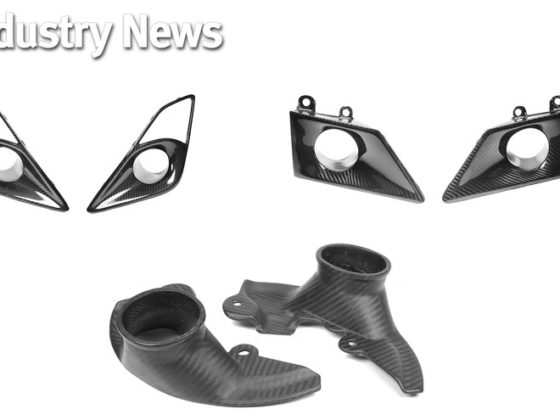,

We went with a 275/35-18 rear (left) and a 245/40-18 front (right), essentially going up 20mm—or two sizes—up from stock. For any sizes 265-mm and over, the tires feature four treaded rows, whereas there are three rows for anything narrower.
Compared to stock, the overall tire heights were kept within 0.3- and 0.4-in for the front and rear, respectively. This ensures our speedometer reading won’t get skewed (although it does appear 5% optimistic from the factory). Tire heights, when comparing front to rear of our new BFG Rivals, only vary 0.1-in as well.
 Check out those R compound-like thick blocks featuring BFG’s “Saw Tooth” lower shoulder on the outside edges. The lower blocks are a visual distinction from other tires. This technology is BFG’s “Extreme Tread Edge” (ETE), which helps cornering during tire roll-over in cars that lack enough negative camber, thus maintaining steering response at high cornering loads.
Check out those R compound-like thick blocks featuring BFG’s “Saw Tooth” lower shoulder on the outside edges. The lower blocks are a visual distinction from other tires. This technology is BFG’s “Extreme Tread Edge” (ETE), which helps cornering during tire roll-over in cars that lack enough negative camber, thus maintaining steering response at high cornering loads. Here we see BFG’s chamfer edges, which distribute contact pressure under extreme braking across the tread blocks.
Here we see BFG’s chamfer edges, which distribute contact pressure under extreme braking across the tread blocks.
 The tire’s lateral draft angles optimize block and rib rigidity under extreme cornering loads. To make sense out of it, the outside edge is on the left of this particular tire. As the tire gets pushed to the right under load, the block actually starts to “square” itself to the pavement, providing an optimal contact patch.
The tire’s lateral draft angles optimize block and rib rigidity under extreme cornering loads. To make sense out of it, the outside edge is on the left of this particular tire. As the tire gets pushed to the right under load, the block actually starts to “square” itself to the pavement, providing an optimal contact patch.
 To entertain our weight-conscious readers, the 275/35-18 tire pictured here weighs in at 26.9-lb, while the front 245/40-18 weighs 25.8-lb.
To entertain our weight-conscious readers, the 275/35-18 tire pictured here weighs in at 26.9-lb, while the front 245/40-18 weighs 25.8-lb.Each D-Force wheel and BFG tire combo weighs in at 45.3-lb and 45.8-lb for the front and rear, respectively. By comparison, the stock 18-in setup on our E46 M3 weighs 51-lb up front and 53-lb in the rear. That means that even though we've gone two sizes wider, we’ve shed 5.7-lb at each front corner and 7.2-lb per rear corner. That's a total of 25.8-lb of reduced, unsprung weight!



